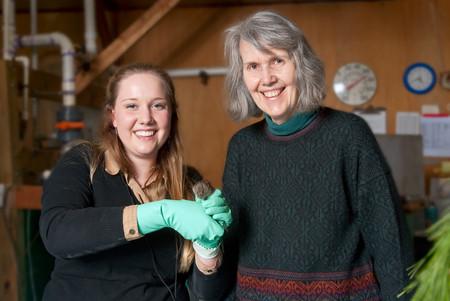Excellence in Teaching, 2011
Zoology

When Michelle Pellissier Scott was a high school student in the 1950s, she and a friend asked too many questions in biology class one day. “Back then, the teacher wasn’t ‘allowed’ to not know something,” recalls Scott. “So instead of saying, ‘I don’t know—I’ll look it up,’ she burst into tears and ran out of the room.” For Scott, a behavioral ecologist, science is still all about asking questions.
After majoring in liberal arts in college, Scott became fascinated by the work of anthropologist Richard Leakey. She began auditing classes at Harvard to find the answer to one question: Why didn’t the establishment scientists approve of Leakey’s work? Ultimately, she wound up getting a doctorate in biology and asking her own research questions, such as “What happens when a burying beetle loses its partner, becoming a single parent?” (Answer: whether male or female, it compensates by devoting extra time to caring for its offspring.)
In the classroom, Scott likes to use a Socratic approach, drawing on many sources, including scientific studies, raw data, videos, and her own experiences as a researcher. To illustrate the rigors of sexual selection, for example, she describes a population of marsupial mice she studied in Australia. All the females ovulate once a year, on the same day, and the males literally run themselves ragged—losing hair and toes—for three weeks, striving to leave their evolutionary mark. One day after the females ovulate, all the males die of stress.
Scott discovered early on that one of the best ways to teach science is to enable the students to behave as scientists. In the lab, her behavioral ecology students must design and carry out their own experiments. On exams, recalls former student Grace Smarsh, Scott gets students to question theories and studies of animal behavior with “extremely thought-provoking questions, such as how to design an experiment to study a specific behavior of lion prides.”
Apparently Smarsh learned her lessons well. She’s just received a National Science Foundation grant to answer some of her own questions—through a study of yellow-winged bats in Tanzania.
—Virginia Stuart
About this Award
Each year, the University selects a small number of its outstanding faculty for special recognition of their achievements in teaching, scholarship, and service. Awards for Excellence in Teaching are given in each college and school, and University-wide awards recognize public service, research, teaching, and engagement.
